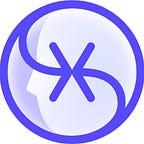User-Centered Design Perspective
User data integrated into your product design can fulfill user expectations and meet user needs. Following this process will create products with positive quality and efficient user experience.
This is the tenet of User-Centered Design (UCD).
Following UCD techniques and methodologies will give you another enormous benefit.
It is often hard to turn empathy-based concepts, like user thoughts, feelings, frustrations, and desires, into something systematic.
In short, when you apply UCD properly, you have a way of adding an emotional impact to your product development processes.
Team members are often experts in their domain with a great understanding of technology and a systematic approach to thinking about the world.
Users, in contrast, are often not so expert at working with software and apps and don’t have such a focus on understanding how technology works. They want technology to help them in their lives.
The UCD process will help you turn the empathetic needs of users into systematic building blocks.
Initial user investigations generate data and serve as a ground to identify pain points and create personas.
During the ideation phase of product development, teams can use personas and pain points to create potential solutions.
Scenarios and storyboards take these multiple solutions and narrow them down to a working model.
As a result, teams create paper or digital prototypes ready for usability testing with additional representative users.
Important Note:
If you have one UX specialist on your team working in isolation, you cannot achieve UCD results. Doing UCD in isolation and then pushing the results to a development team is never a suitable solution.
The only proven way of successful UCD is an early investment in a cultural shift towards unified team vision and communication.
The involvement of UX specialists, Marketing, Product Design, Project Management, CEO is a clear path towards successful UCD results.
Investment in UCD is a time saver in product development and, as a result, creates a positive impact on internal communication processes.
Generating solution with impact and ease is possible when the entire team uses a well-defined vocabulary and shares a common goal.
UCD is a multidisciplinary field known by names, such as Design Thinking, Service Design, Interaction Design, and User Experience design.
There’s no one way of doing UCD.
Each technique leaves up from the last, and following each will give you the most benefits.
Without a good set of initial data, there’s no way you can do user-centered design.
In a foundational collection of data, you will need to answer the following questions:
- Who are your users?
- What are your user’s problems?
- How do they complete tasks currently?
Gathering and organizing actionable user data is the foundational process.
Personas are imaginary descriptions of the users of your product.
They create a basis for design discussions by representing pieces of user data into focused descriptions.
Personas provide more concrete user representation for your team.
Ideation tools are a solution to make sure that you are designing the best possible solution and not one that seems just good enough.
Ideation tools remove the constraints placed in the development process.
Thinking broadly about the problem can lead to better solutions.
In this way, you can bring to life a more user-oriented product.
Benefits of ideation tools
- Removing barriers to creativity
- Ideation helps the team towards consensus
- Proposition of new ideas can come from everyone
- Everyone is involved in the design decision process
- Clear understanding of why some ideas are not feasible
Scenarios and Storyboards ensure that you have a guiding rail towards buildable solutions.
The writing of scenarios enables the description of an “ideal” future in which your users can get work done without today’s problems.
You must include the mechanisms with which the users achieve the desired outcome.
Storyboards are the visual version of the scenarios and help you with the visualization of interaction.
Storyboards are interaction plans before the building of a prototype.
Paper prototyping is a usable way of testing your ideas with minimal investment.
Paper prototyping gives you an easy way of removing ideas if you got things wrong.
The paper prototype lets you test usability and interface concepts.
You can validate proper task flow and understanding of design concepts by participants.
Because the paper prototype doesn’t look like a finished product, session participants tend to give more honest feedback. A paper prototype can give you a way to learn more about the viability of the proposed design.
User-centered Design value helps the teams in the creation of an implementation plan.
You map different capabilities which are needed to build a real product.
The team can see the relationships between different items and tasks. They will know what functionality is essential to deliver first and what will be nice to have after.
